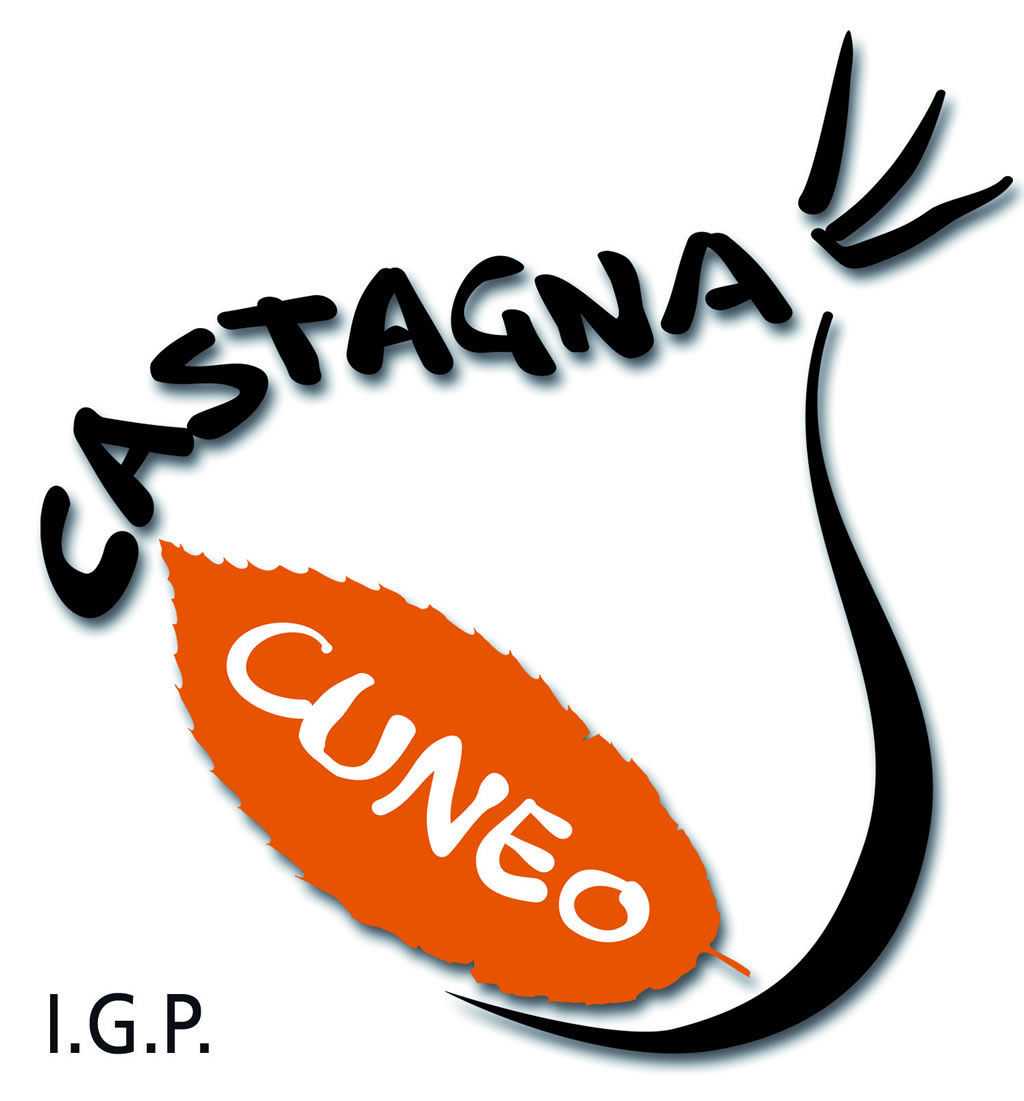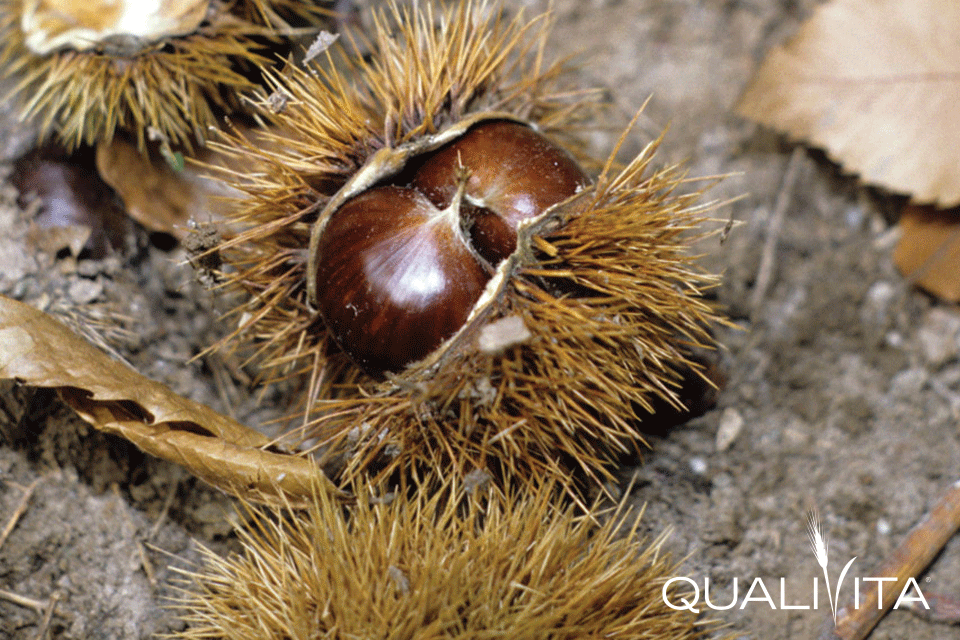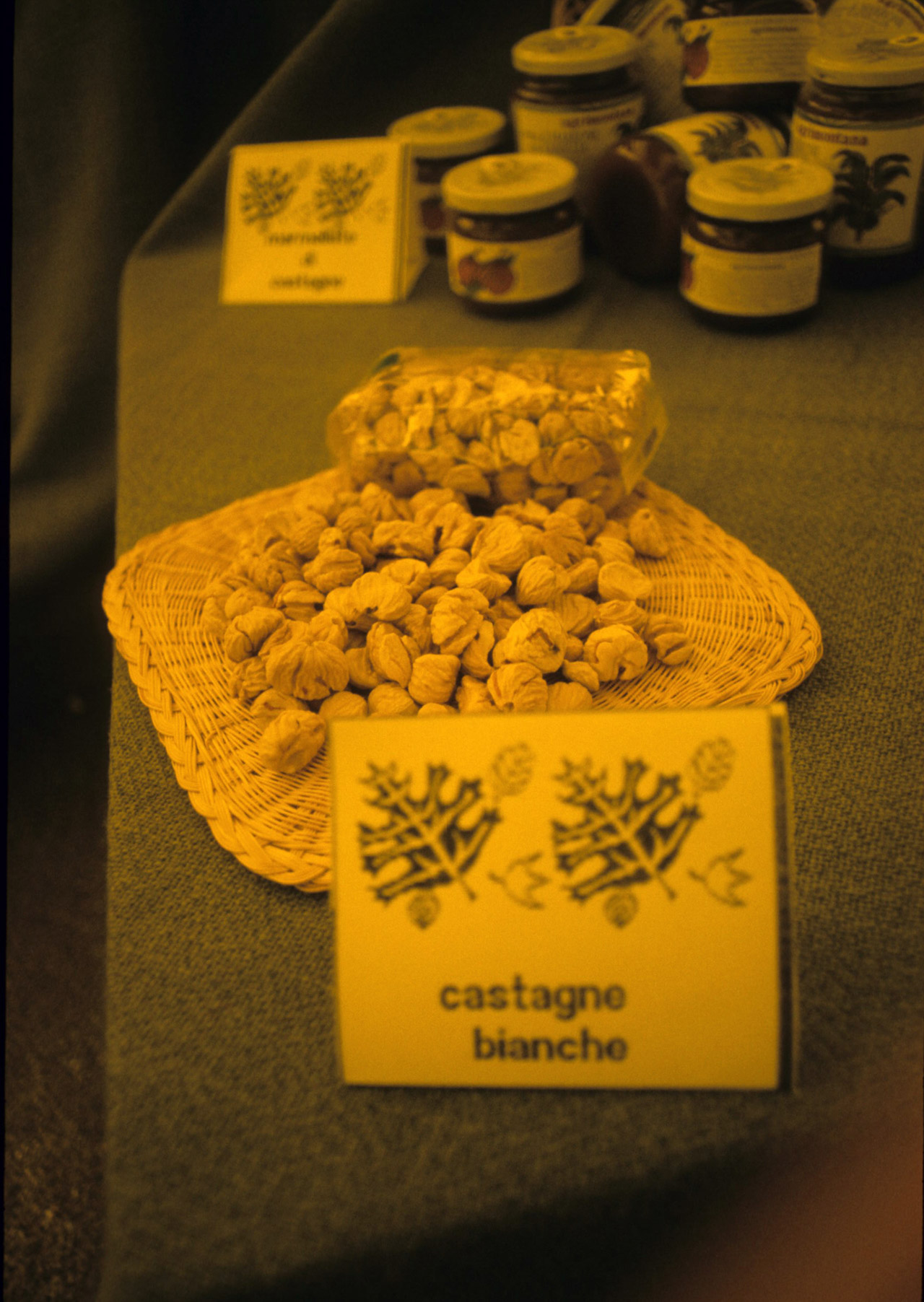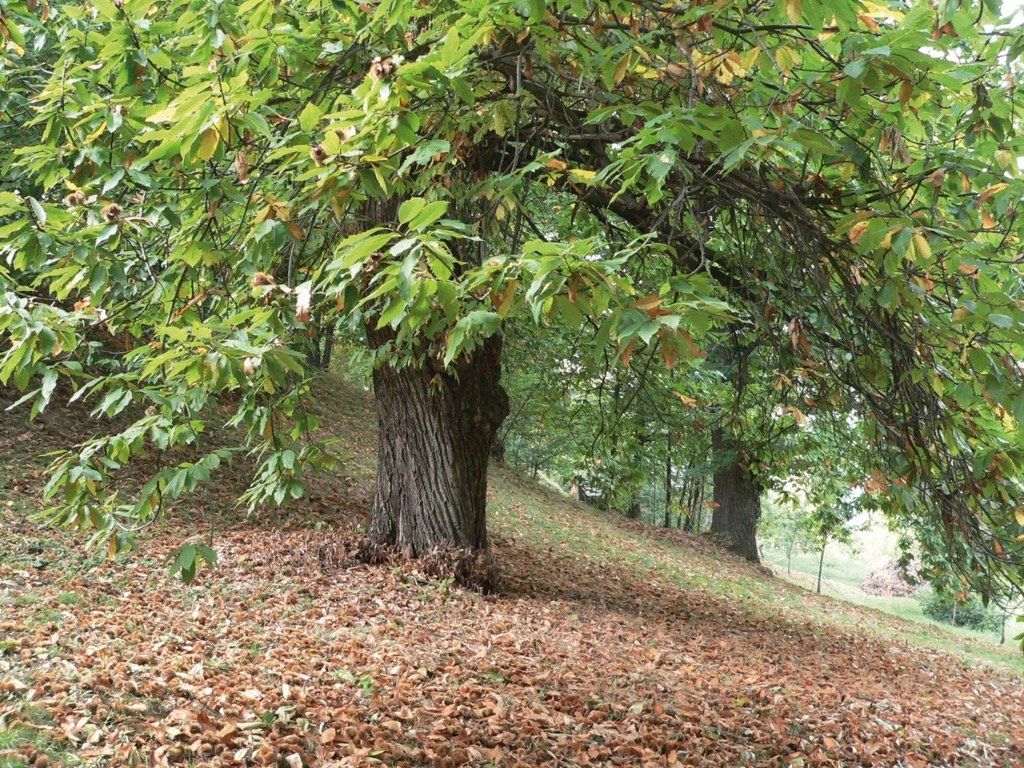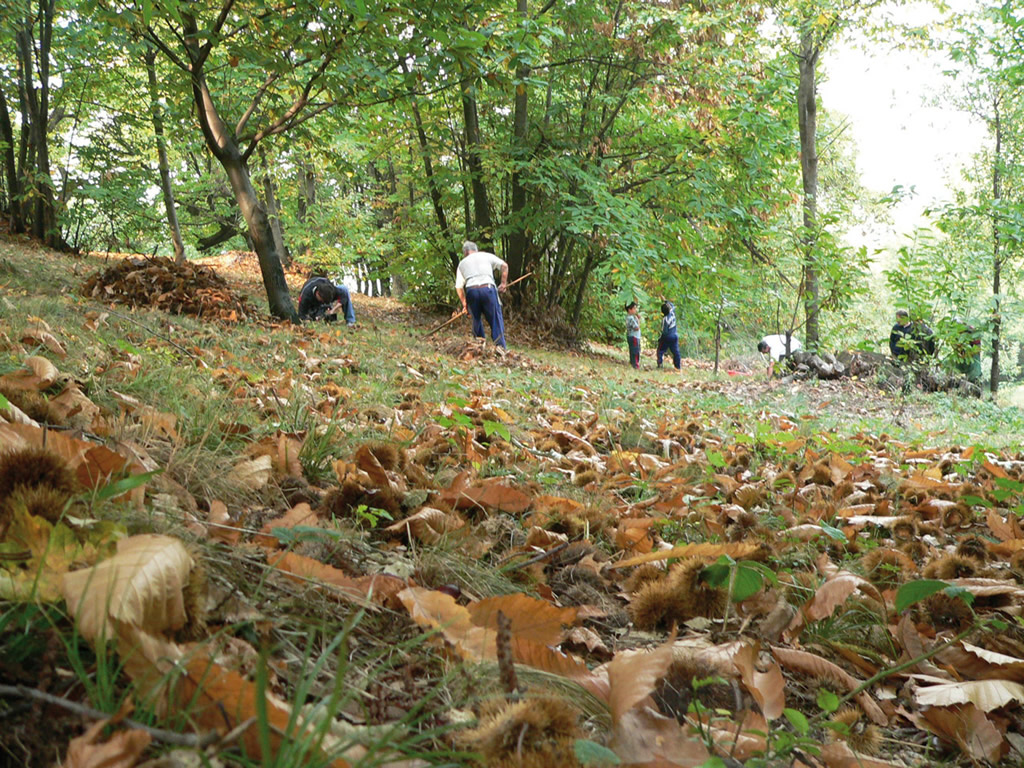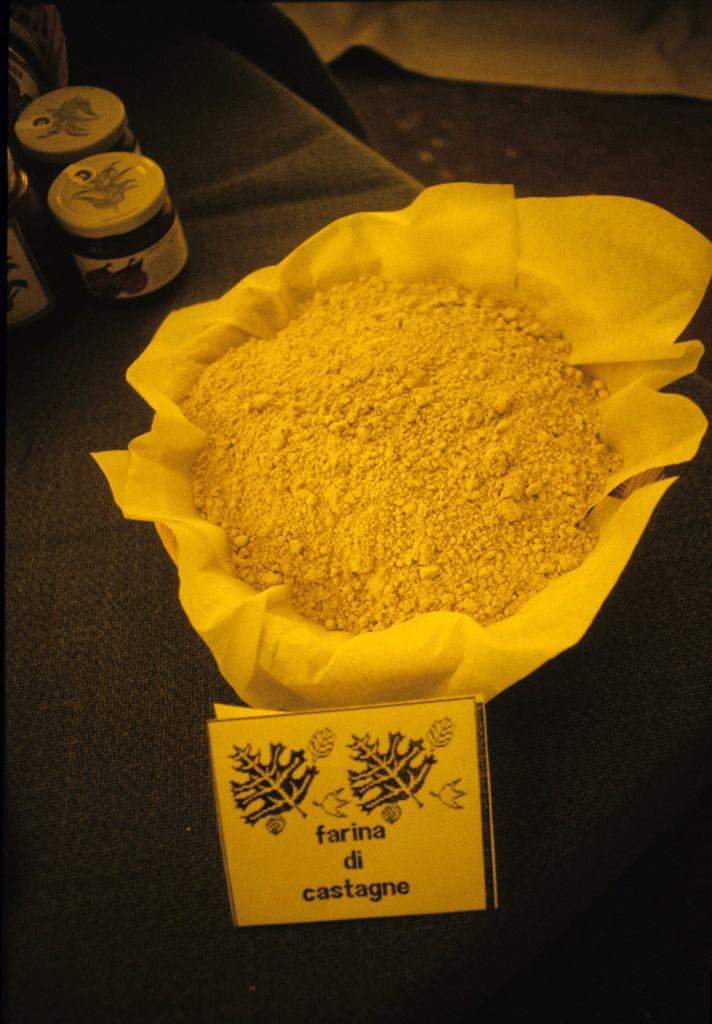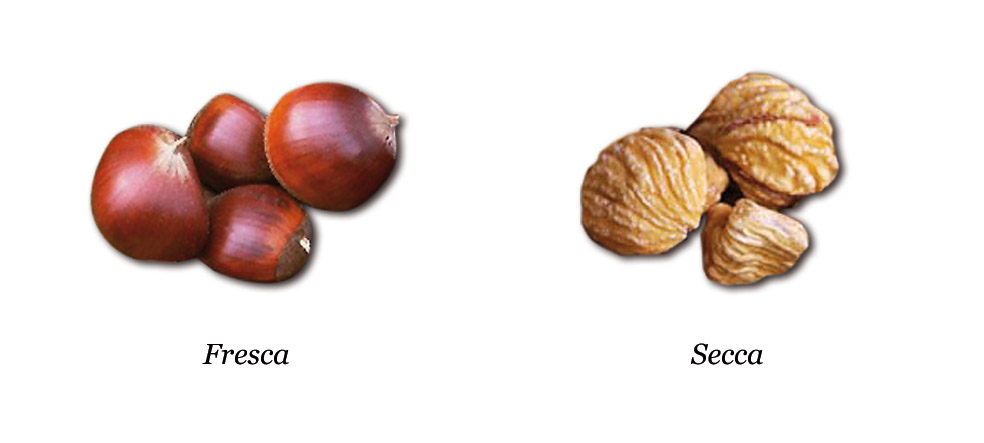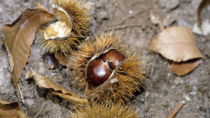Description
The Castagna Cuneo PGI refers to the fresh or dried chestnut belonging to the species Castanea sativa M., deriving from the following varieties: Ciapastra, Tempuriva, Bracalla, Contessa, Pugnante, Sarvai d’Oca, Sarvai di Gurg, Sarvaschina, Siria, Rubiera, Marrubia, Gentile, Verdesa, Castagna della Madonna, Frattona, Gabiana, Rossastra, Crou, Garrone Rosso, Garrone Nero, Marrone di Chiusa Pesio and Spina Lunga.
Production Area
The production area of Castagna Cuneo PGI is within around 100 municipalities in the Province of Cuneo, in the Piedmont region.
Production Method
The chestnut trees are cultivated in deep, drained soil, rich in organic matter and without active limestone, elements which give this fruit its special organoleptic properties. The young chestnut plants are maintained and trimmed regularly using traditional regional methods. Immediately after the harvest, Castagna Cuneo PGI can be either treated with hot water or subjected to a dipping technique, which involves immersing the chestnuts in vats containing room temperature water for 7-9 days. This induces slight fermentation which allows for the creation of a sterile environment without the use of additives. The product may be frozen if the shell is removed. Dried Castagna Cuneo PGI is produced with traditional desiccation techniques, over a low flame in special brick structures.
Appearance and Flavour
The exterior of fresh Castagna Cuneo PGI ranges from light chestnut to dark brown in colour; the star-shaped hilum varies in size and is hazelnut in colour; the episperm has a yellow to pale brown colour and the seed is white to cream with a crunchy consistency and a sweet, delicate flavour. Dried Castagna Cuneo PGI is shelled and has a pale straw colour.
History
Castagna Cuneo PGI boasts ancient origins. The history of the populations in the Cuneo valley is in fact linked to the production and consumption of chestnuts. The first references to chestnut cultivation in the Province of Cuneo date back to the end of the 7th century. There is more precise documentation from the 14th century onwards: castles belonging to the House of Savoy recorded the quantity and characteristics of products from the chestnut orchards. After the Unification of Italy, the chestnut continued to be an essential component of the population’s diet and the revenue of mountain families. At the beginning of the 20th century, there was a cultivation crisis due to the exodus of families towards big cities and abroad; chestnut production only recovered towards the end of the century, arriving at the great fame it enjoys today.
Gastronomy
Castagna Cuneo PGI should be kept in a cool, dry place. It is excellent eaten raw, boiled or roasted, but also as an ingredient in desserts: mousses, soufflés, Bavarian cream and ice cream. Chestnut flour and dried chestnuts are also used in traditional dishes from the Cuneo area, such as polenta, tagliatelle, ravioli and gnocchi.
Marketing
The product is marketed as Castagna Cuneo PGI, in two typologies: Fresh and Dry. The first is available on the market from the beginning of October to mid-November; the second, throughout the winter and generally until mid-March. The product is sold in packaging of different materials, with a weight ranging from 100 g to 30 kg; in wooden or plastic crates; or jute sacks with a weight of 5, 10, 25, 30, 50 and 100 kg. It is also used as ingredient for the production of Farina di Castagna Cuneo PGI (chestnut flour).
Distinctive Features
Castagna Cuneo PGI owes its particular characteristics to the climatic conditions of the production area, which is situated at a relatively low altitude of between 200 and 1000 metres above sea level.



